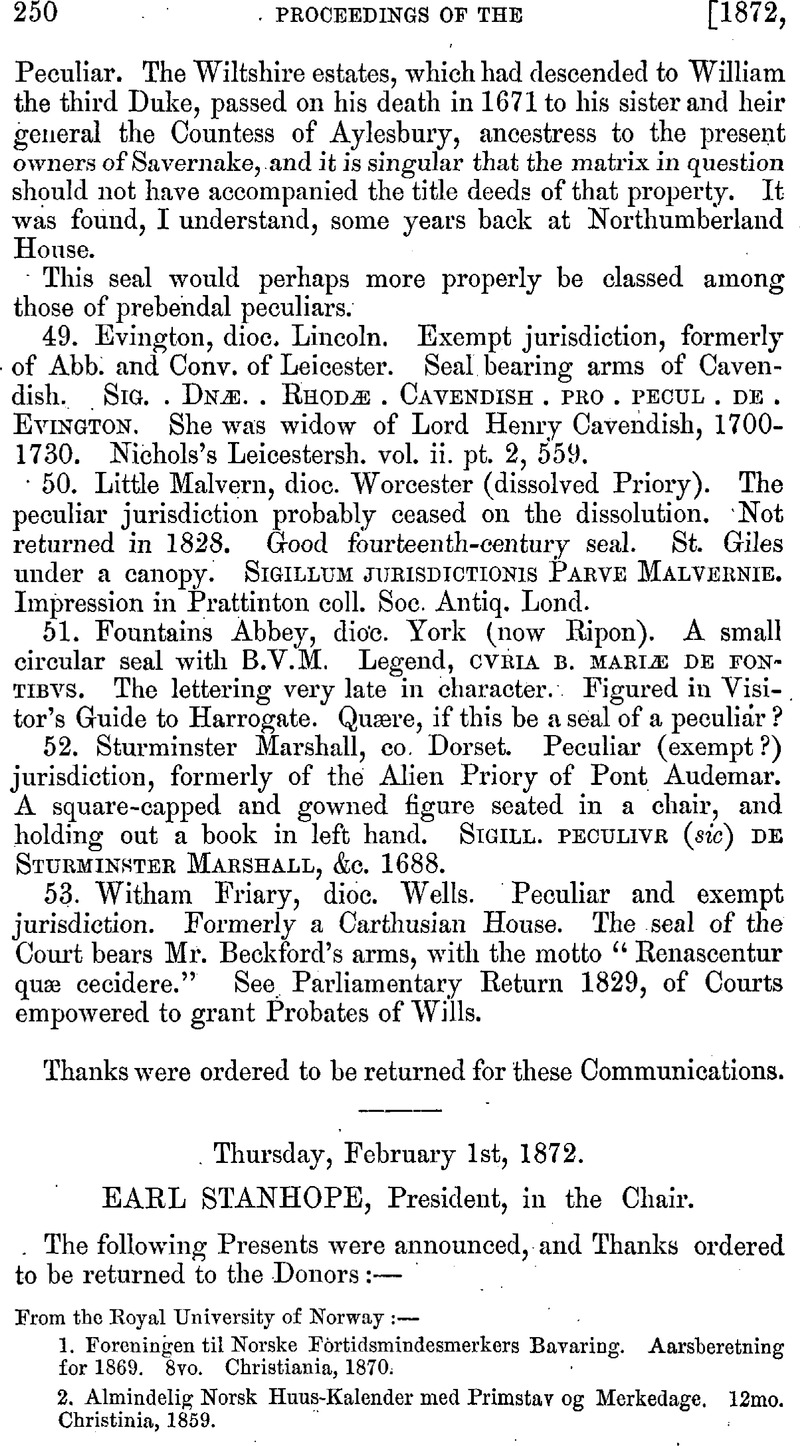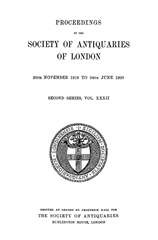No CrossRef data available.
Article contents
Thursday, February 1st, 1872
Published online by Cambridge University Press: 10 May 2010
Abstract

- Type
- Proceedings
- Information
- Copyright
- Copyright © The Society of Antiquaries of London 1873
References
page 252 note * Dr. Oliver, in his Monasticon Diocesis Exonicnsis, fol. 1846, p. 245, describes “the splendid circular seal” of Pilton,. and alludes to the “rude engraving” of it in the last edition of Dugdale's Monasticon, but he does not appear to bo aware of the better engraving in Hutchins's Dorsetshire, nor of the fact that the matrices are (or ought to be) extant. I am sorry that I cannot state where they arc now preserved. (J. G. N.)
page 253 note * To the kindness of Mr. Shipp, of Blandford, the Society is indebted for the use of the well-engraved cuts of the. Milton Seal, executed for. the new edition of Hutchins's Dorsetshire.
page 254 note * Henry Laing's Catalogue of Scottish Seals, 4to. 1850, Nos. 979, 980.
page 256 note * See it engraved in Blomefield's Norfolk. Fol. 1745. Vol. ii. and in the new Monasticon, plate xxi. of seals.
page 256 note † The vicissitudes suffered by the reverse of the Norwich seal are worth notice, It is an architectural composition—in the principal gable of which there was originally a representation of the Holy Trinity in quatrefoil. To this the legend referred—
Est michi nomen idem tribus, uni, laus honor idem :
Et benedico gregi, famulatur que michi regi.
In the portal was the Angelic Salutation. In Queen Elizabeth's time, as appears from impressions of that period in the British Museum, the Salutation had been replaced by a large shield with a plain cross, the arms of Norwich city. The words AVE MAKIA however were left under the shield. Subsequently the seal was still further altered by substituting three initials for the Holy Trinity, and by removing the legend, and repeating that belonging to the obverse, containing the name of the church.
The obverse has also undergone a change. In the porch of the church was a bishop, now removed, with an inscription beneath which appears to read :
“Norwici (or Norvicensis Ecclcsie) Fundator Herbertus,” referring to Herbert de Lozinga, who removed the See to Norwich, 1094. (C. S. P.)


